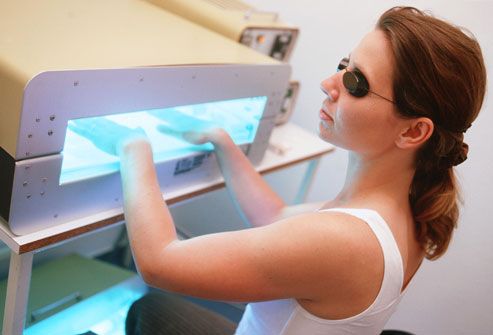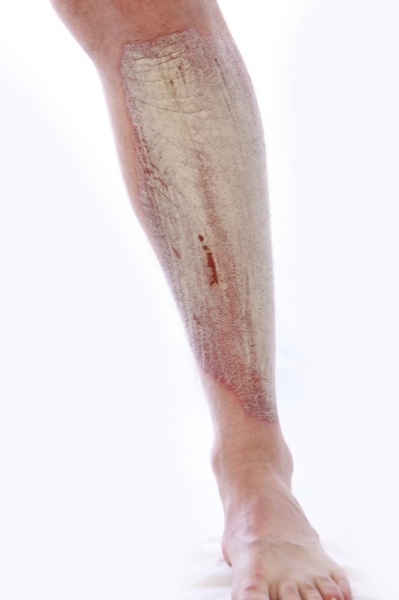Psoriasis Photo Therapy: Therapeutic UVA Light or UVB Rays
The use of psoriasis photo therapy in treating symptoms and outbreaks is actually quite effective but, as with most types of medical treatments, it does have its downfalls. Any adult with psoriasis may use this method of treatment but it cannot assist children suffering with symptoms as the exposure to UV light proves to be too damaging.
To reap the benefits of this treatment in an effective and safe way, you must always talk honestly with your doctor and become aware of all the possible risks.
Understand Why the Dead Sea is Beneficial for Psoriasis
About Psoriasis Photo Therapy

Maybe you just learned you have psoriasis or maybe you are exploring options but either way, you should first learn what psoriasis photo therapy is before taking it into consideration. This form of therapy makes use of ultraviolet light by exposing the skin to it on a regular basis. The photo, or light therapy, consists of the use of UVB or UVA rays, both of which work differently.
The Treatment
UVA light does not have the power UVB rays have and it only works when used with a light sensitization cream known as Psoralen. The addition of this oral or topical medication gives this treatment the name PUVA. It is most effective when treating psoriasis on the hands and feet, guttate or plaque psoriasis.
UVB rays, like UVA rays, come from sunlight (read about my Dead Sea experiences) and assist in preventing the growth of skin cells. Unlike UVA rays, UVB rays come in two types commonly known as narrow or broad band. The main difference between the two rays pertains to the amount of light released from the bulbs and the theory that narrow band UVB is more effective in less frequent intervals.
The Good
The benefits of psoriasis photo therapy are few and short-lived. One positive aspect of this treatment is that it can eliminate oral medications and you have the possibility of performing this therapy at home.
Furthermore, you can participate in light therapy simply by taking the sun for short periods of time and when wearing sunscreen. This provides you with an all-natural and free method for treating all types of psoriasis. Unlike medications, light therapy requires less frequent applications, proving to be a more convenient solution.
The Bad
As always, all good things come with a downside. Exposure to artificial light can sometimes be just as damaging, if not more so, than exposure to natural sunlight. In addition to the possibility of causing cancer, UVB and UVA rays come with annoying side effects such as fatigue or itchiness.
This method of treatment might also make you nauseous, provide you with a burning sensation or bring on headaches as well as irritating your skin and causing flair ups.
Using the PUVA treatment is also more inconvenient than the use of UVB rays because it requires you to go to the doctor several times a week where and as, the UVB ray treatment can often be done at home. Additionally, you have to participate in skin cancer screenings at least once a year.
Finally, another downfall of psoriasis photo therapy sometimes involves the use of messy ointments such as coal tar. Some doctors believe that coal tar provides a barrier against the risk of getting skin cancer yet other studies suggest coal tar itself can lead to this problem. For this reason, light therapy should be a last resort as opposed to a primary method of treatment.
Psoriasis photo therapy can be highly effective in some people but ineffective in others since everyone's body reacts differently, as does each type of this ailment. While the rewards can be great, the risks may also be high and in some cases, irreversible; which is why you should explore other options prior to beginning light therapy.
References
What works for me
Homeopathic products
Natural Shower gel (without any colors or perfumes)
Psoriasis photo therapy
and other psoriasis treatments
National Institute of Arthritis and Musculoskeletal and Skin Diseases




